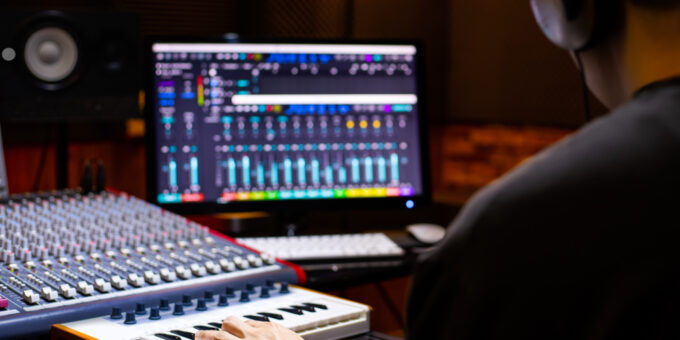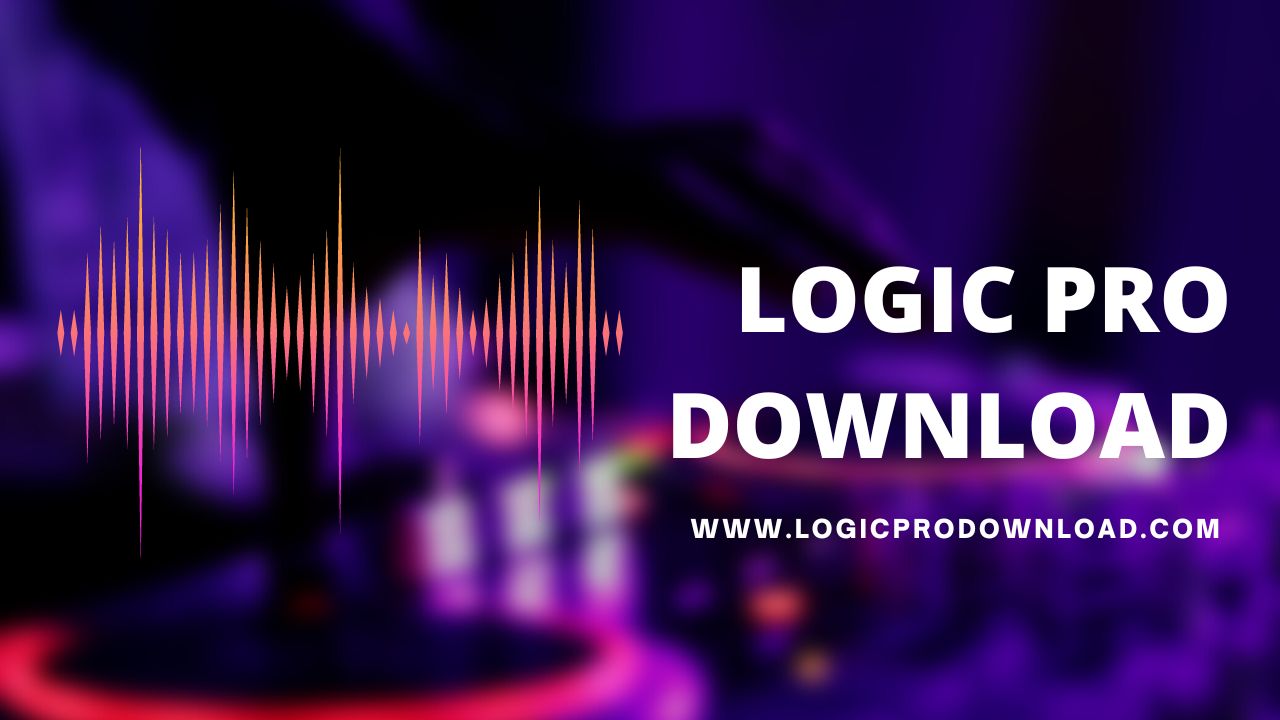
Logic Pro Download is a music creation software that allows you to create and edit music easily. It has many working areas and features to make the task more manageable for the user. Once downloaded, the program is easy to use and requires a few basic steps. To open Logic Pro Download, click on its Launchpad icon in the Dock or Applications folder. Once it has been opened, it displays a Project Chooser to choose a new project or open an existing one.

If you want to use the Mac OS X version of Logic Pro X on your Windows PC
You’ll need to download a Mac OS X virtualization file. You can download this file from the Apple store or third-party websites. If you don’t have a Mac OS X-based PC, you can use a virtualization program like VirtualBox.
The download process is quick and straightforward. You can click on the download option and wait a few minutes for the software to finish. Once the download is complete, you can start using Logic Pro X. Make sure your PC meets the minimum requirements before installing the software for the best results.
The download for Logic Pro X for Mac 10.4 is available for free on Apple’s website. It is safe to download and install because it’s manually checked. It won’t damage your computer and will work flawlessly on your Mac. You’ll be able to register the software after it’s downloaded to your computer.
The Mac version of Logic Pro X includes various features to help you make the most of your music production needs.
The program has a comprehensive range of audio effects and plug-ins, allowing you to create music tracks that sound professional. It also has a wide range of editing options and region-based parameters.
Another helpful feature of Logic Pro X is its AU plugin support. This enables users to use many popular AU plugins to enhance their productions further. You can also use the software’s audio synchronization capabilities for seamless mixing. In addition, Logic Pro X allows you to create music in new nonlinear and freeform ways with the Live Loops feature.
Logic Pro X is a powerful music production program for experienced and amateur musicians. You can use it to produce music from MIDI recordings or external sounds. The program also can convert MIDI performances into real-time music notation. In addition, it supports sharing and exporting your projects and stems.
Logic Pro X also has a wide selection of synthesizers and keyboards. It includes the Retro Synth option, which lets you experience the classic synth sounds of the ’70s. You can also use the Vintage Keyboards module to produce realistic electric piano and B3 organ sounds. It also offers sophisticated sound-shaping controls. Apple offers a 90-day free trial of Logic Pro X. After the trial period, you can purchase the software for 199.9$.
Logic Pro’s new audio track editor
If you want to split your audio tracks into smaller segments, you can use Logic’s new audio track editor. To do this, click the scissors tool in the track editor and hold down the Alt key. This will create Transient Markers that you can position on your editing tracks. You can also manually add markers or Ctrl-click to delete them.
Logic Pro’s audio track editor is located on the Audio Files panel. This window will default open the audio file in the current track. You can edit or delete Audio Files, reverse or invert audio, fix phase cancellation errors, or make other permanent edits using the Audio File Editor. This window also works with transient markers, which mark important points in an audio file.
Another helpful tool is the metronome. This tool allows you to edit the duration and pitch of a recording.
You can also turn it on and off. Logic has an automatic metronome that remembers the setting when you’re in record mode. It also features a piano roll editor.
The new audio track editor in Logic Pro Download lets you create and edit your music. It supports VST synths, hardware MIDI devices, and drum tracks. You can also create new ways using keyboard shortcuts. You can also edit your MIDI data using the step and score editor.
Another helpful tool for recording audio is the audio file editor. You can set the input and output devices with this tool when registering. You can even set the time limits for recording. Moreover, you can use the tracks area for fine editing and arranging. This feature allows for much more flexibility than MIDI and audio track editors.
A Sampler is a new tool that gives Logic users a complete stock sampling instrument.
Keymap was a godsend for creating and editing devices, but it also had some limitations. Apple finally addressed this with the Sampler. With it, Logic Pro users can easily create, edit and share entire stock sampled instruments.
The Sampler is accessible like an FX plug-in and has a dedicated menu for managing samples. Once you’ve loaded a piece, you can use its shortcut buttons on the Navigation bar to toggle between the different panes and resize the display. There’s also a pop-up menu on the Action bar, which lets you manage the synthesizer parameters.
You can import any piece of audio into Logic Pro’s new Sampler. You can map samples directly into the UI or import them via a file. The sampler can read sample names and analyze the audio to find the best root keys. It also includes auto-looping options, particularly helpful for looping sustained samples.
The Sampler uses the macOS Spotlight to find samples.
You’ll never have to worry about the annoying “can’t find sample” dialog anymore. Moreover, the sampler displays the full file path of a sample. It also allows you to select which model you want to load. Logic’s new sampler will let you separate front panel settings from the underlying sample map. You can save these settings to the Instruments folder and also copy them between Instruments.
As a long-term Logic Pro user, I’m happy to report that Logic Pro 10.5 includes a new sampler that has become an essential part of my workflow. The new sampler is backward-compatible with EXS24 software instruments and uses the same file extension. You can create custom instruments with the Sampler like any other plug-in instrument. You can implement your new device in a Software Instrument track or a Live Loop session. The sampler also works well with the new Step Sequencer.
Logic Pro 10.5’s Sampler is a powerful tool that lets you create your custom samples. With the new Sampler, you can make instruments that sound like what you’re hearing and create your unique sounds. You can also import sample libraries from other programs using the Sampler. For example, you can import DLS, Gigasampler, or SoundFont2.
Logic Pro’s new MIDI plug-in
Logic Pro’s new MIDI Plug-In has several unique features that can speed up your workflow and boost creativity. Unlike the Piano Roll, you don’t always have to edit MIDI data directly. Instead, you can use MIDI FX plug-ins to process MIDI regions and speed up your creative process.
The plug-in also features a MIDI transposer that allows you to adjust the MIDI pitch. It also offers support for MIDI channels and triggers. If you use a compatible MIDI interface, you can use this plug-in with Logic Pro Download.
Logic Pro’s new MIDI FX plug-in comes with nine MIDI FX plug-ins. Modifier, Modulator, Note Repeater, Velocity Process, and Scripter are the most useful. The modulator lets you swap MIDI data and recreate controller mappings.
It can be tricky to drag multiple tracks into Logic Pro Download if you’re using a MIDI controller.
Fortunately, the new MIDI plug-in solves this problem. You can change the MIDI timing and even set up MIDI to scrub with the audio. Furthermore, you can filter out certain MIDI functions, such as the MIDI scrub.
Logic Pro’s new MIDI plugins let you assign custom names to MIDI Control Change definitions when you’re recording MIDI audio. These names appear on the UI of the various Logic editors. The plugin also has a dynamic UI that lets you organize definitions into groups. You can also set the number of CC parameters per group. You can also assign MIDI Channel and AU3 Port numbers to the MIDI channel.
If you’re looking for a free MIDI plug-in, download ADSR Sample Manager. This free plugin organizes your samples based on tags, types, and BPM. It also synchronizes with the settings of your DAW.

